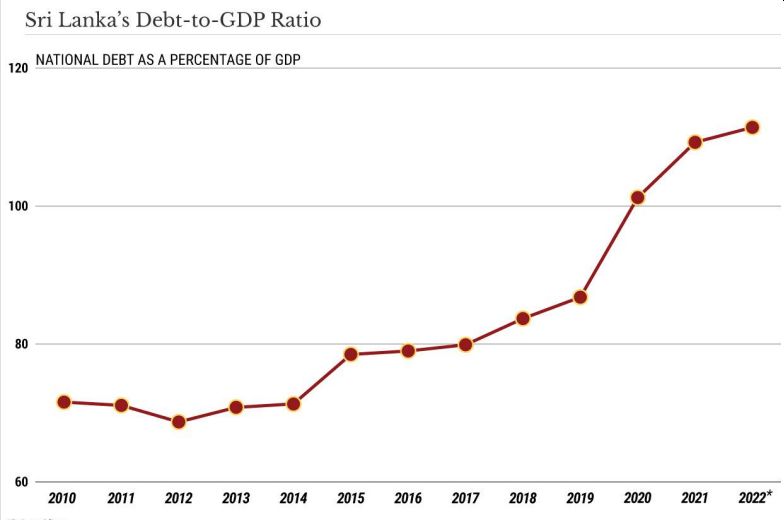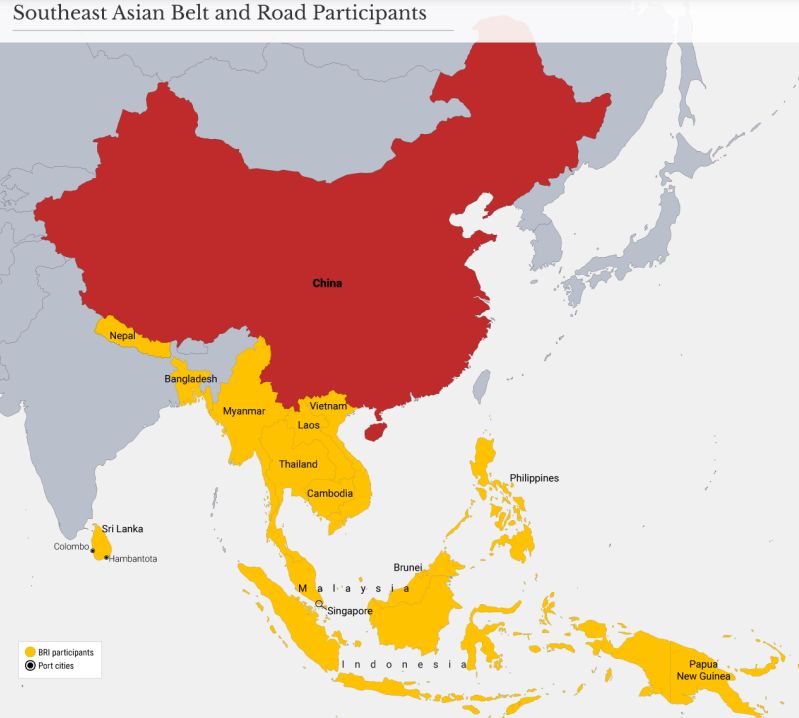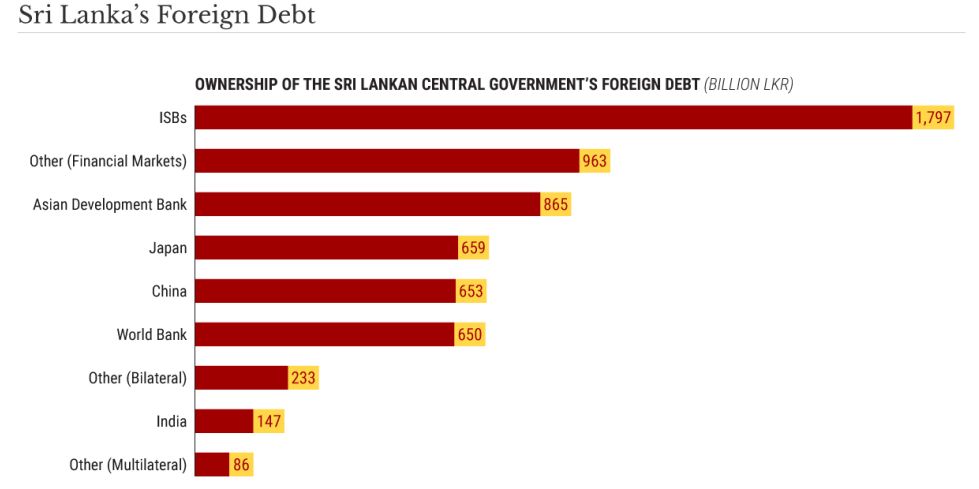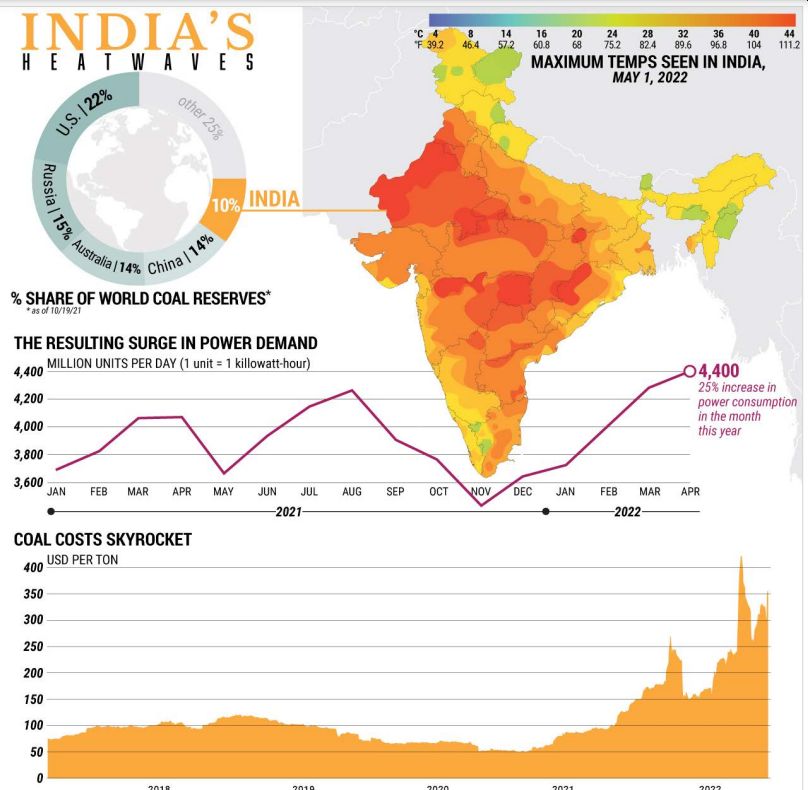By Eric Vandenbroeck and co-workers
Already in 2018, we pointed out that Sri Lanka's desperately
under-utilized Hambantota Port had to be surrendered to Chinese operators in a
humiliating example of debt-trap diplomacy.
More recently, China has dispatched a military ship to Sri Lanka's port
city of Hambantota amid the rapidly changing political situation in the island
nation. The move has raised questions about whether China is trying to
establish a robust military presence on Sri Lanka's Indian Ocean coast.
Yet Sri Lanka asked China to defer the planned visit of the ship, as it
was objected
to by India. That is worrying that the Chinese-built and leased China
will use the port of Hambantota as a military base in India's backyard. Not to
mention that India recently emerged as the top lender to Sri Lanka,
extending USD 376.9 million worth of credit compared to USD 67.9 million by
China in the first four months of this year.

China won Sri Lanka’s earlier trust because of its willingness to lend
money to countries shunned by the international community for their poor human
rights records. Indeed, their relationship strengthened after allegations
emerged in Sri Lanka of state-sponsored human rights abuses during the Tamil Tigers-led insurgency in the country.

China’s Motivations
What’s in it for
Beijing? China has been investing massively in infrastructure and other
projects in nearby countries, primarily because this helps guarantee its access
to foreign markets through key regional maritime routes. These investments are
a substantial source of Chinese influence in the region.
In addition, Sri
Lanka is significant in China’s “string of pearls” strategy in the Indian
Ocean. The port of Hambantota, operated as a joint venture and currently leased
to China for 99 years, straddles a bustling east-west shipping route. It offers
a diversified range of transport and logistical services. China has a strategic
imperative to gain immediate access to India.
Ocean and control
ports in the Asia-Pacific region so that it can conduct trade and maintain
strong relations with its numerous partners. Hambantota is close to major sea
lanes, so building a port there could help Beijing guarantee access to
international trade routes nearby.
However, China hasn’t
been enthusiastic about coming to its ally’s aid. It even refused to
restructure Sri Lanka’s debt when asked. On the other hand, India was the first
to provide immediate help with a $1.5 billion line of credit. A line of credit
may not be ideal given Sri Lanka’s situation, but right now, it needs whatever
help it can get. New Delhi’s offer is an attempt to pry the island nation away
from Beijing– not surprising since India is trying to counter China in the
Indo-Pacific region, where the two regional powers have competing interests.
For India, wooing one of China’s “pearls” would be a big step.
China’s hesitancy in
helping Sri Lanka is a result of domestic constraints. The East Asian country
is facing its structural economic problems and has been battling an outbreak of
the omicron COVID-19 variant for months, which has led to partial or complete
lockdowns of significant cities, including its financial hub, Shanghai. Given
that Beijing spent weeks considering whether to provide Sri Lanka with
financial assistance, it seemed that China was unwilling or unable to help.

On April 25, however,
talks between the two countries began after Chinese Premier Li Keqiang said
China was ready to provide much-needed assistance for Sri Lanka. But many in
Sri Lanka see this as an empty promise that came too late and only as a
response to Sri Lanka’s talks with the IMF. Doubts about China’s credibility
aren’t surprising, given that Sri Lanka in the past has had to find new
financing for BRI projects after China failed to come through with promised
funds on time.
Waiting in the Wings
China’s role in helping
Sri Lanka resolve its economic crisis is important because it will set a
precedent for other countries in South and Southeast Asia that may also face
financial difficulties soon. Also, China’s global image is in part based on its
ability to assist and invest in smaller neighboring countries, so if Beijing
fails to come through, it could cast a negative light on its international
standing.
Moreover, as seen
with India, other powers are waiting in the wings to fill the void left by
Beijing. China’s failure to act opens the door for other nations that want to
counter Chinese influence in the region. And Sri Lanka has no choice but to
rely on its largest creditors, many of which have an interest in strengthening
China’s regional influence.
India, as mentioned,
is one example, but Japan is another potential source of financial assistance.
It has historically been a significant source of development aid for Sri Lanka
and offered help during the country’s last economic crisis in 2016.
The U.S. has also
provided financial assistance to countries in the region and may welcome an
opportunity to undermine China here. Furthermore, Sri Lanka expects to receive
$500 million as emergency aid from the Asian Development Bank and World Bank –
two institutions affiliated with countries that have an interest in countering
Chinese influence –in the next six months.
Much depends on
China’s handling of Sri Lanka’s economic crisis. It’ll have to give up
something significant, money, or influence.
Energy disruptions are threatening
India’s economic recovery.

Although India has
some of the world’s largest coal reserves, its massive power consumption means
importing coal to meet its energy needs. India is facing a two-part coal
conundrum:
Supply shortages and
rising prices. Oil and natural gas prices were already rising as economies
across the globe came back online from the pandemic. Between the recovery and
the price hikes provoked by Russia’s invasion of
Ukraine, many countries turned to cheaper energy alternatives, including
coal. This, in turn, pushed up coal prices.
The situation
concerns the Indian economy on several fronts; power demand was well above peak
consumption last summer, and power plants are now in a weaker position to meet
upcoming summer demand.
Coal shortages and
slumping inventories have created electricity shortages in major Indian cities,
including New Delhi, where hospitals have been affected. Sixty percent of
households in India have already experienced daily power cuts. The government
plans to increase domestic coal output and reduce coal supplies to the
non-power sector. The supply cuts will affect aluminum smelters, steel mills,
and other industrial activities, risking the country’s economic recovery.
For updates click hompage here